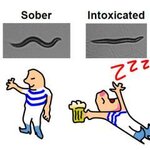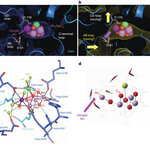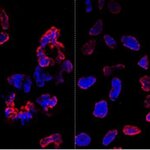Genetics & Molecular Biology

Cardiologists have developed a minimally invasive gene transplant procedure that changes unspecialized heart cells into 'biological pacemaker' cells that keep the heart beating.
The laboratory animal research is the result of a dozen years of research with the goal of developing biological treatments for patients with heart rhythm disorders who currently are treated with surgically implanted pacemakers.
In the United States, an estimated 300,000 patients receive pacemakers every year. If future research is successful, the procedure could be ready for human clinical studies in…

Investigators have identified a gene that underlies a very rare but devastating autoinflammatory condition in children. Several existing drugs have shown therapeutic potential in laboratory studies, and one is currently being studied in children with the disease, which the researchers named STING-associated vasculopathy with onset in infancy (SAVI).
Autoinflammatory diseases are a class of conditions in which the immune system, seemingly unprovoked, becomes activated and triggers inflammation. Normally, the inflammatory response helps quell infections, but the prolonged inflammation…

Neuroscientists have created mutant worms that don't get intoxicated by alcohol, by inserting a modified human alcohol target into the worms.
An alcohol target is any neuronal molecule that binds alcohol, of which there are many.
One important aspect of this modified alcohol target, a neuronal channel called the BK channel, is that the mutation only affects its response to alcohol. The BK channel typically regulates many important functions including activity of neurons, blood vessels, the respiratory tract and bladder. The alcohol-insensitive mutation does not disrupt these functions at all…

Biophysics researchers recently used short pulses of light to peer into the mechanics of photosynthesis to try and determine the role of molecule vibrations in the energy conversion process that powers life on earth.
Through photosynthesis, plants and some bacteria turn sunlight, water and carbon dioxide into food for themselves and oxygen for animals to breathe. It's perhaps the most important biochemical process on Earth and scientists don't yet fully understand how it works. New 'quantum biology' findings could potentially help engineers make more efficient solar cells…

Eosinophillic esophagitis (EoE) is a chronic inflammatory disorder of the esophagus. The condition is triggered by allergic hypersensitivity to certain foods and an over-accumulation in the esophagus of white blood cells called eosinophils.
EoE can cause a variety of gastrointestinal complaints including reflux-like symptoms, vomiting, difficulty swallowing, tissue scarring, fibrosis, the formation of strictures and other medical complications.
New research has identified a novel genetic and molecular pathway in the esophagus that causes eosinophillic esophagitis, opening up potential…

Since stem cell research became common 50 years ago, scientists have been trying to unravel mechanisms that guide function and differentiation of blood stem cells, those cells that generate all blood cells including our immune system.
Study of human blood stem cells is challenging because they can only be found in the bone marrow in specialized "niches" that cannot be recapitulated in a culture dish.
A group of scientists from Dresden led by stem cell researcher Prof. Claudia Waskow (Technische Universität Dresden) was able to generate a mouse model that supports the transplantation of…

One of your earliest science memories in school is learning that, during photosynthesis, plants take in carbon dioxide sunshine and produce oxygen. Later we all learned that in lakes and oceans a similar process happens due to cyanobacteria.
What has remained unknown is exactly how that happens.
Oxygen formation in photosynthesis occurs in a reaction sequence that is completed within one thousandth of a second, so it's not surprising that it has been so difficult to prove experimentally how precisely a catalyst consisting of four manganese ions and one calcium ion (Mn4Ca…

By identifying the molecular structure of a vital biological chemical, researchers may have solved a long-standing debate.
The controversy is about a form of enzyme called a heme (or haem, as in haemoglobin) at the center of which is an iron atom (Fe) called a 'ferryl' which becomes oxidized when a reacting heme is in an intermediate state called Compound I.
The question is whether this oxidation involves just an oxygen atom (O), or a hydroxyl group (OH). The difference being one hydrogen ion, or in other words, a proton.
Much has been written in the scientific literature about this…

In recent years, biology has been thrown around like a football. Activists in numerous areas invoke it - those against food science say scientists are tinkerers with no expertise while those against pesticides claim that the biology clearly shows what your grandparents ate made you obese.
Like in most scientific hot button topics, avoid the fringes. Epigenetics does what it does, but it is not determining your weight. For all the confusion, you have to blame epidemiologists who know just enough science to be wrong. If a pregnant mother is undernourished, epidemiologists have found that the…

The ability to switch out one gene for another in living stem cells puts us on the path to a science fiction future - fixing disease-causing genes in humans.
But there are concerns about mutations. However, a new study has found that using gene-editing techniques on stem cells doesn't increase the overall occurrence of mutations in the cells.
When scientists want to change the sequence of a stretch of DNA inside cells--either for research purposes or to fix a genetic mutation for therapeutic purposes--they have their choice of two methods. They can use an engineered virus to deliver the…